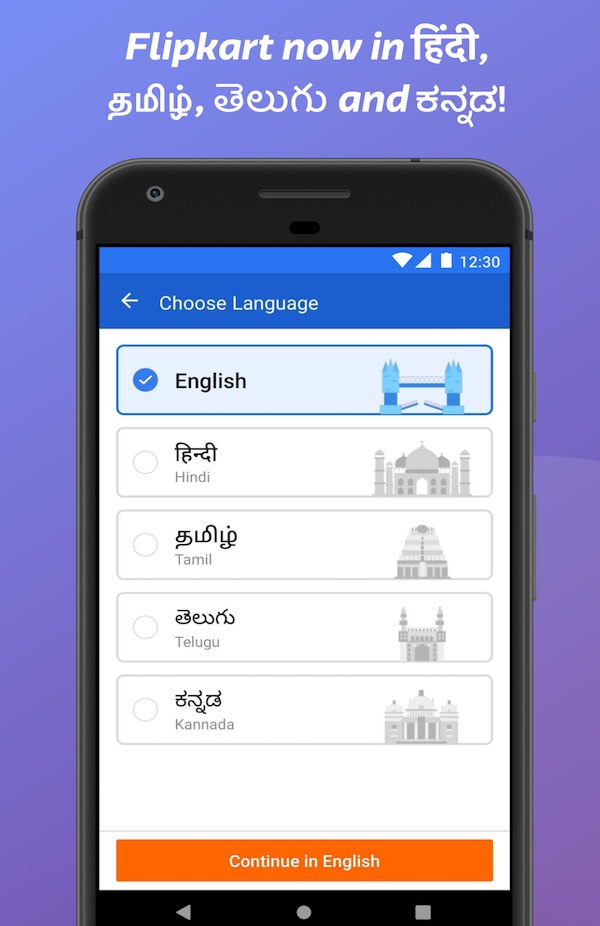Flipkart on Wednesday added support for three more local languages as the Indian e-commerce giant looks to widen its foothold in smaller cities and towns across the country where fewer people speak English and Hindi.
The Walmart-owned firm said its online marketplace now has interfaces in Tamil, Telugu, and Kannada, three languages that are spoken by roughly 200 million people in India.
Today’s announcement follows Flipkart adapting its interface in Hindi language on its website and app last year. Flipkart’s rival, Amazon, added support for Hindi in 2018. It does not support any additional Indian languages.
A Flipkart spokeswoman told TechCrunch that support for Hindi language has been well received by customers. “About 95% of consumers who opted for the Hindi interface continued using the interface as a testament of its efficacy,” the spokeswoman said.
Flipkart said the new localization effort, for which it conducted on-ground surveys in many cities, includes a “judicious” mix of translation and transliteration of words from the aforementioned three languages. Overall, it has incorporated more than 5.4 million translated words into its product pages, banners, and payments pages in the three local languages.

“We truly believe that language, if solved well, can be an opportunity rather than a barrier to reach millions of consumers who have been underserved. As a homegrown e-commerce marketplace, we understand India and its diversity in a more nuanced way and are building products that have the potential to bring a long-term change,” said Kalyan Krishnamurthy, chief executive officer of Flipkart Group, in a statement.
The push to local languages comes as both Flipkart and Amazon India are exploring ways to expand their reach beyond urban cities in India. Online shopping accounts for about 3% of total retail sales in India, according to industry estimates.
In recent quarters, Flipkart has added support for voice assistant, short-form videos, and bundled a free on-demand video streaming service to please new customers. The company has previously stated that most of its new users are coming from smaller cities and towns in India.
India, the world’s second largest internet market, has emerged as a global battleground for American and Chinese technology groups. Both Amazon, which completed seven years in the country this month, and 13-year-old Flipkart claim tentpole position in the e-commerce market. Flipkart claims it has amassed over 150 million registered users.
Amazon India’s apps had about 140 million monthly active users last month, ahead of Flipkart marquee app’s 108 million, according to one of the top mobile insight firms, data of which an industry executive shared with TechCrunch. (Though it should be noted that monthly active users, that alone of mobile apps, is not the best metric to gauge a shopping platform’s performance.)
Source: TechCrunch